A new Instrument for RHEED studies
High Energy Analyzer for filtering diffraction diagrams and for Reflection Electron Energy Loss (REELS) Measurements
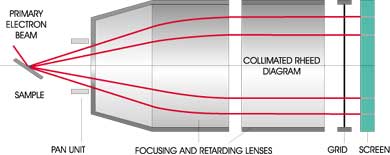 The RHEA-100 is a high energy, high resolving power energy analyzer with imaging capability (Ref. 1/2). It offers two modes of operation:
The RHEA-100 is a high energy, high resolving power energy analyzer with imaging capability (Ref. 1/2). It offers two modes of operation:
- In the first mode, complete RHEED diagrams are energy filtered and can be viewed on a fluorescent screen with inelastically backscattered electrons removed.
- In the second mode, in situ energy loss distributions (EELS) for selected angular ranges can be measured.
The analyzer offers the removal of the inelastically scattered electrons (as is the case in LEED optics) and the in situ determination of the chemical state of the surface by EELS. Use of the RHEA-100 does not impact any of the benefits of the RHEED technique, such as in situ structural imaging during growth, measurement of intensity oscillations for growth rate, long working distances to avoid interfering with growth, and image acquisition in real time.
The patented analyzer design is depicted above. A lens system is used to retard and collimate the diffracted electrons into a parallel beam. The collimated beam is accurately energy filtered over a wide angular range. The filtered electrons are accelerated to the screen to form a visible image. Complete energy filtered RHEED diagrams are viewed on a large fluorescent screen. The diffuse background and the Kikuchi lines can be almost completely filtered out by adjusting the filter voltage to a few eV below the primary beam energy. In addition, electrons diffracted under the same angle are focused onto the screen, thus increasing the coherence length of the system.
1. Energy Filtering Mode
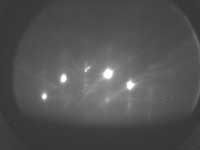
Figure 2a
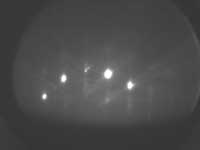
Figure 2b
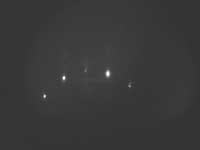
Figure 2c

Figure 2d
Figure (2a) is taken at 50 eV below the primary beam energy,
Figure (2b) at 22 eV, just on the top of the volume plasmon,
Figure (2c) at the elastic peak, and
Figure (2d) just above the cut-off voltage.
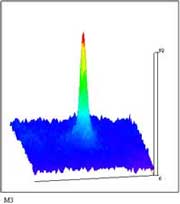
Figure 3a
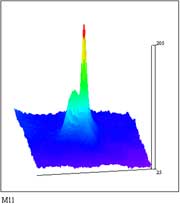
Figure 3b
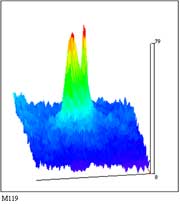
Figure 3c
2. EELS Mode
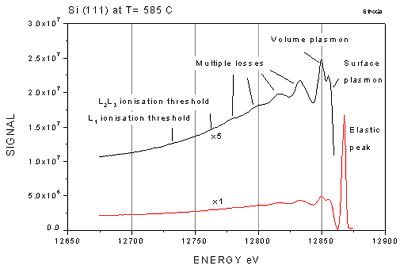
Figure 4
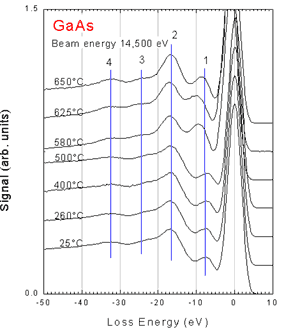
Figure 5
The RHEA-100 RHEED Energy Analyzer allows in situ measurements in Reflection Electron Energy Loss Spectra (REELS). The energy distribution of electrons at different diffraction angles is measured using a highly sensitive photomultiplier and Lock-In technique. Since the energy losses are characteristic of the elemental composition and chemical environment of the surface, fast and sensitive characterizations are possible during growth. Figure (4) shows an example of the EELS spectra taken from Si (111) and measured at a scan speed of 10 V/s. Surface plasmon, volume plasmon, and multiple energy losses are clearly detected. In situ EELS data on GaAs and InP are reported in references (1), see Figure 5.
Highlights of the RHEA100 Energy Analyzer
| Energy resolution | better than 0.02% of primary energy, typically 3 eV to 20 keV |
| Energy range | 15 keV; 20 keV; or 30 keV |
| Electron detection | large diameter fluorescent screen |
| Filtered angle | 20 degrees total |
| Data acquisition |
|
| Mounting flange | CF 100 standard |
| Working distance | 50mm to 250mm |
| Working pressure | up to a few 10-5 torr |
References
1. Proc. of the X International MBE conference, 1998, Cannes and
Journal of Crystal Growth, Volumes 201–202, May 1999, Pages 45-49
2. Patented
